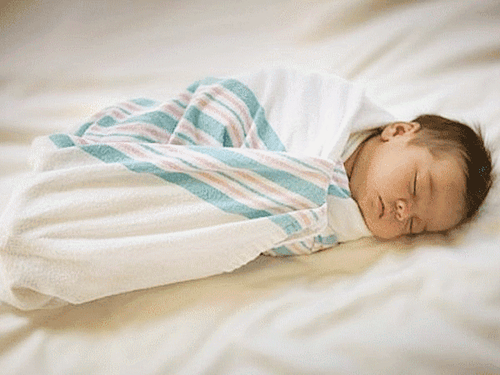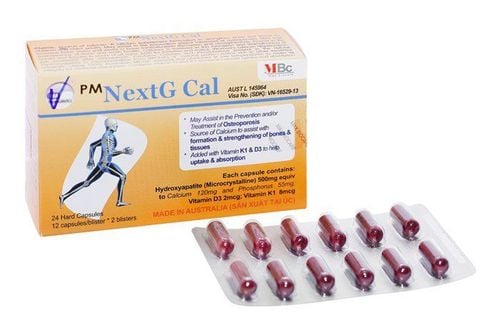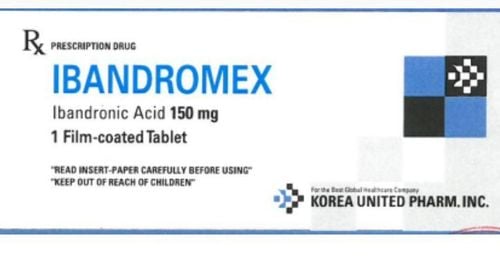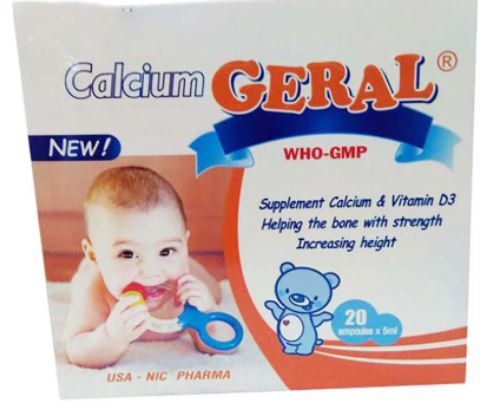This is an automatically translated article.
Article by Specialist II Nguyen Thi Tam - Head of Pediatric Unit II - Pediatric Center - Vinmec Times City International General Hospital.
Twisting is a common phenomenon in babies, there are many children who twist their bodies with startling, causing many young parents to worry. So, is a baby twisting themselves a cause for concern?
1. The phenomenon of twisting body in infants
The appearance of twisting, turning red, and ending within minutes of waking or sleeping are present in most infants from a few weeks to 2 months of age and usually end by the time the child is 3 - 4 months of age. This is a normal physiological manifestation, caused by the unaccustomed baby to life outside the mother's womb, undifferentiated nerve cells, underdeveloped cerebral cortex and striatum, so subcortical activity predominates. position. Therefore, children often show signs of dancing and moving their limbs often because the response of the cerebral cortex tends to spread when stimulated.
Manifestation or twisting in infants is divided into 2 cases: twisting is a physiological manifestation and twisting is a manifestation of pathology. Therefore, when the child twists, parents need to pay attention to whether the twisting phenomenon is a sign of normal physiological manifestations or a manifestation of other diseases.
Trắc nghiệm: Sự phát triển tinh thần, vận động của bé thế nào là đúng chuẩn?
Khi nào bé biết nói, biết hóng chuyện hay biết cầm cốc là "đúng chuẩn"? Điểm xem bạn biết được bao nhiêu mốc phát triển tinh thần, vận động "đúng chuẩn" của bé nhé!The following content is prepared under supervision of Thạc sĩ, Bác sĩ y khoa, Ma Văn Thấm , Nhi , Phòng khám Đa khoa Quốc tế Vinmec Dương Đông(Phú Quốc)
2. Expression of infant twisting due to physiology
There are many physiological factors from the environment that affect the baby, causing the infant to twist and startle such as:
An uncomfortable sleeping place, sleeping on a mattress that is too hard, a high pillow or an uncomfortable sleeping position roof; there is a lot of light or loud noise around. The child is too hot or too cold. Hungry children will often show signs of fidgeting, twisting, bending... Reaction when urinating or defecating Children wet diapers, diapers due to urinating a lot. Children wrapped in towels or wearing clothes that are too tight: When children have unconscious hand and foot movements, if they are wrapped too tightly, it will cause discomfort and cause reactions such as twisting and straining.
3. Expression of infant twisting due to pathology
When a newborn baby twists and turns a lot with symptoms of spitting up milk, sweating, crying a lot, it may be a sign of a medical condition, for example vitamin D, calcium deficiency or gastrointestinal disease. ..
If the infant is often twisted, red-faced, or even startled when sleeping, parents need to be more concerned because this, if prolonged, may affect the development of the child. children. In addition, some other diseases that cause damage to the skin of children such as itching and burning also make it difficult for children to sleep peacefully or because insects get into the ears, causing a reaction of twisting, straining...
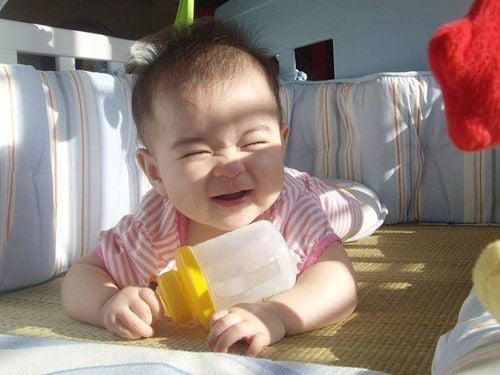
4. How do babies stop twisting?
To reduce or stop the baby's startling and startling, parents can refer to and apply some of the following tips:
4.1. Change diapers dry clean, smooth, comfortable clothes
Choose good absorbent diapers for your baby to feel comfortable. Dress your baby in loose and warm enough pajamas.
It is necessary to wash the children's blankets regularly, keep the room clean so that the child does not feel itchy or uncomfortable.
4.2. Soothe the baby, let the baby be comfortable without twisting
When you see the child twisting, the mother can hold the child in her arms to make the child more comfortable. You can sing lullabies, soothe, or talk to your child to make them feel more secure and protected.
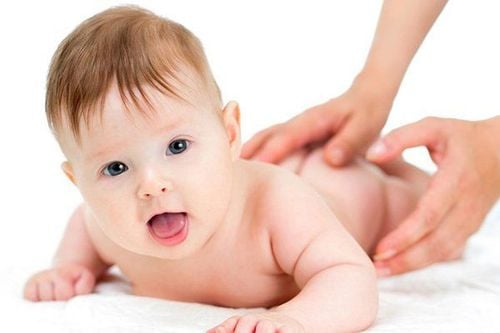
4.3. Sunbathe often
To keep the baby's skin clean and free from skin diseases that cause itching and discomfort. Give children regular sunbathing, appropriate sunbathing time to prevent vitamin D deficiency and calcium supplements if needed.
4.4. Mother should not be too strict
Mothers should not abstain but need to eat enough calcium-rich foods such as salmon, mackerel, tuna, ... to provide adequate calcium sources through breast milk for babies.
4.5. Do not use strange tips to treat baby twisting
Sauna, hot compresses, leaves ... are folk remedies that have not been tested by a doctor that can have a bad effect on the baby's health. Therefore, when detecting abnormalities in children, parents need to take their children to specialized medical facilities for examination and treatment advice.
4.6. Pay attention to your child's feelings
It is normal for babies 1, 2 months old to writhe, it's a way for babies to relax muscles and joints when lying in one place for too long and this symptom will go away on its own when the baby is 4 months old.
Newborn twisting is also a way for children to show that they are tired, uncomfortable, hungry, tired or wet diapers... Therefore, parents need to pay attention to their children's emotions to take measures. remedy.
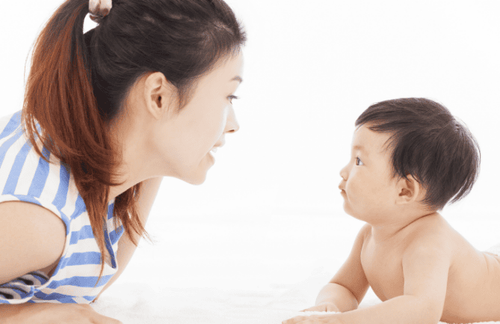
4.7. Check the temperature of the child's room
Room temperature that is too hot or too cold will also directly affect the child's sleep, causing the baby to sleep well or fit, sleep not deeply and often cry.
4.8. Test on baby's skin
Parents should check the child's skin for redness, ulcers, or rashes. Should check the natural openings (anus, private area...) for anything abnormal. Does the child have heat, fever or not, are the gloves and feet too tight...
When a child has one of the following symptoms, it is necessary to take the child to see a doctor for advice and effective treatment:
Hypocalcaemia: With manifestations of increased neuromuscular excitability, irritability, restless sleep, or startled, stiffening with additional manifestations such as: hair loss, vomiting, night sweats, hiccups, fussiness, slow weight gain... Newborns often writhe, have trouble sleeping, lose weight, and cry for a long time. If an infant squirms and starts to wake up with difficulty breathing, he or she may have chronic obstructive sleep apnea. This condition usually occurs during deep sleep but can also occur when the child is in a drowsy state. Nervous problems such as congenital neurological disorders, damaged nerves can also cause twisting and startling conditions.
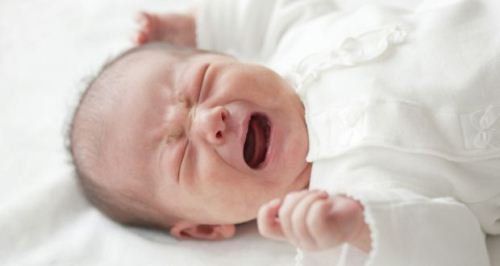
All manifestations of the child's pathology, the parents must not arbitrarily treat the child with any form of any kind, but need to take the child to see a doctor to get appropriate treatment measures. fit.
Vinmec International General Hospital is the address for receiving and examining respiratory diseases that infants and young children are susceptible to: viral fever, bacterial fever, respiratory infection, pneumonia in children, .... With modern equipment, sterile space, minimizing the impact as well as the risk of disease spread. Along with that is the dedication from the doctors with professional experience with pediatric patients, making the examination no longer a concern of the parents.
Please dial HOTLINE for more information or register for an appointment HERE. Download MyVinmec app to make appointments faster and to manage your bookings easily.







